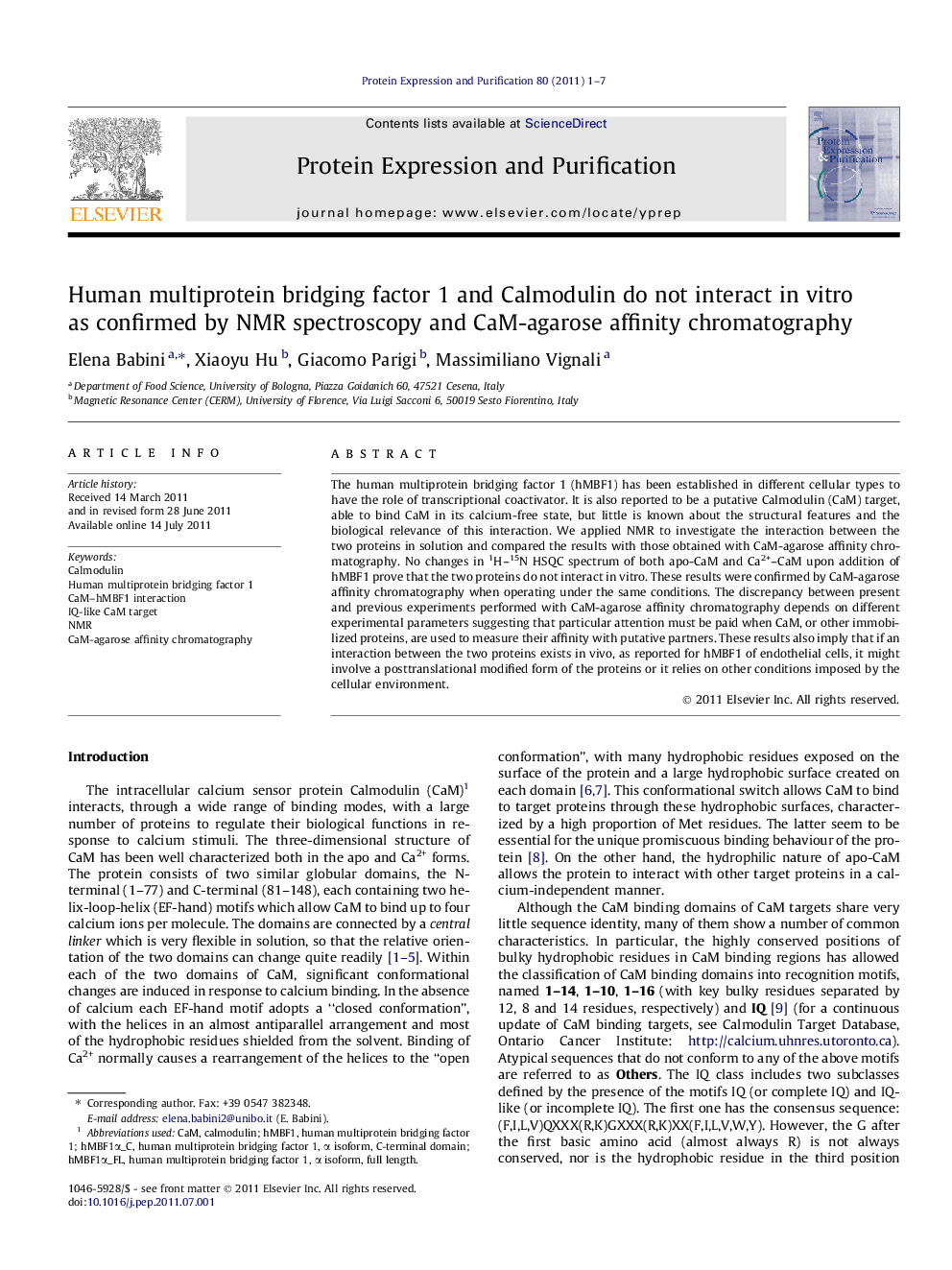| Article ID | Journal | Published Year | Pages | File Type |
|---|---|---|---|---|
| 2020748 | Protein Expression and Purification | 2011 | 7 Pages |
Abstract
The human multiprotein bridging factor 1 (hMBF1) has been established in different cellular types to have the role of transcriptional coactivator. It is also reported to be a putative Calmodulin (CaM) target, able to bind CaM in its calcium-free state, but little is known about the structural features and the biological relevance of this interaction. We applied NMR to investigate the interaction between the two proteins in solution and compared the results with those obtained with CaM-agarose affinity chromatography. No changes in 1H-15N HSQC spectrum of both apo-CaM and Ca2+-CaM upon addition of hMBF1 prove that the two proteins do not interact in vitro. These results were confirmed by CaM-agarose affinity chromatography when operating under the same conditions. The discrepancy between present and previous experiments performed with CaM-agarose affinity chromatography depends on different experimental parameters suggesting that particular attention must be paid when CaM, or other immobilized proteins, are used to measure their affinity with putative partners. These results also imply that if an interaction between the two proteins exists in vivo, as reported for hMBF1 of endothelial cells, it might involve a posttranslational modified form of the proteins or it relies on other conditions imposed by the cellular environment.
Keywords
Related Topics
Life Sciences
Biochemistry, Genetics and Molecular Biology
Biochemistry
Authors
Elena Babini, Xiaoyu Hu, Giacomo Parigi, Massimiliano Vignali,
